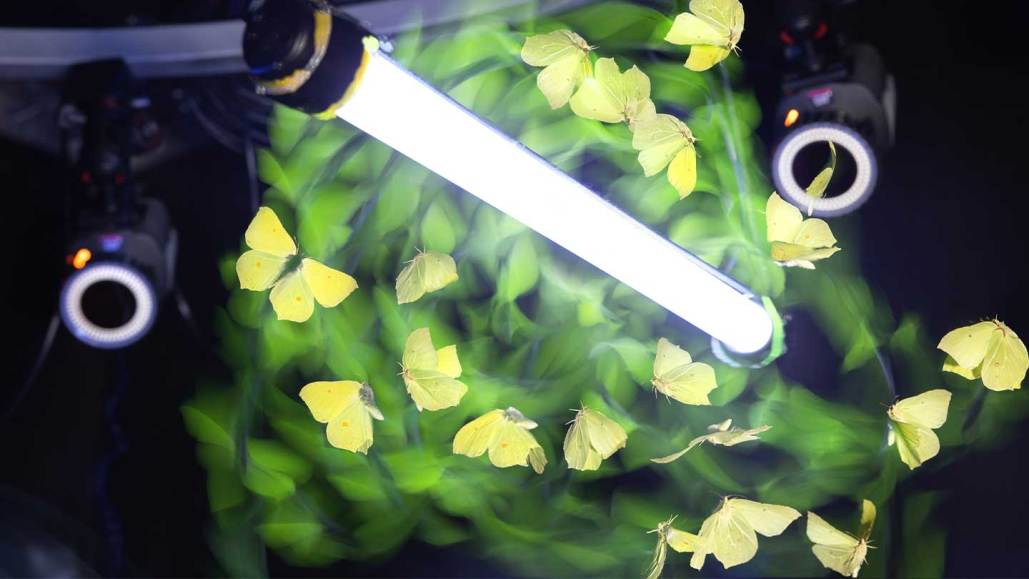Artificial Lights Confuse Insects' Sense of Direction

Insects that you see flying in circles around your porch light are not mesmerized by it. They might have lost their sense of direction, according to data captured by high-speed infrared cameras.
Insects like moths naturally turn their backs towards light. Yet, when they face away from artificial light, their sense of orientation seems to get confused, as per a research published in Nature Communications on January 30. This confusion might cause them to lose their sense of the ground, leading them to either fly in circles or plummet towards the ground.
These are the first concrete findings explaining the long-standing behavior of insects getting attracted to street lamps or flames, according to Florian Altermatt, an evolutionary biologist at the University of Zurich unaffiliated with the study. Altermatt found the simple explanation enlightening compared to previous complex theories.
Past hypotheses ranged from insects getting entrapped due to being blinded by light, to them seeing light sources as escape routes. Another theory suggested that nocturnal insects use moonlight for navigation but mistakenly use artificial lights. Such lights can be dangerous for insects.
Samuel Fabian, an entomologist at Imperial College London, likens the behavior of flying insects turning their backs to the light, akin to pilots utilizing various instruments to determine which way is up when accelerating. He adds that this serves well until the invention of LED lights, which makes it problematic.
Fabian, along with his team, used high-speed infrared cameras to monitor how artificial lights impact the flight pattern of different insects. During their study in Costa Rica, they observed wild insects from 10 orders circling endlessly around lights. Some flew upwards, losing speed until they couldn't fly any higher and when the artificial light pointed upwards, some insects turned around and flew towards the ground.
Homing in on their flight pattern, the team found that insects kept lights at their back, even if this resulted in a crash. This was true for both moths and dragonflies studied in the lab.
Yash Sondhi, a coauthor on the paper, said the results didn’t align with previously proposed theories. The insects were not orienting towards the light as an escape mechanism or in smooth spirals signifying the usage of light as a compass.
Rather, it was as though someone was pulling a pilot's joystick in the wrong direction, Fabian explained.
Normal flight pattern resumed when the positioning was opposite to the ground, resembling a sky-like artificial light. However, crash landings were common when a white sheet was illuminated on the floor. If the white sheet stretched into a canopy above the floor and diffused light, similar to a sky-like setup, then insects didn't get entrapped in the light.
Experiments in the lab found exceptions to this behavior. Fruit flies and Oleander hawk moths were not significantly affected by the light and could fly over ultraviolet or LED lights without losing their course. Yet in the wild, these moths still crash. The reasons for this are unclear. One possibility could be that insects occasionally control their reaction to light, or they could simply adapt over time.
While it's evident that artificial light can lead insects into collision, further study is needed to confirm if it's because insects use the sky's light for navigation, and their reaction remains the same even in the presence of artificial lights, according to Brett Seymoure, an animal and visual ecologist at the University of Texas at El Paso, who wasn’t involved in the study.
Seymoure, Sondhi and other scientists have teamed up to explore other unanswered queries on the effect of light pollution on insects, like their vulnerability at different latitudes.
Another concept Seymoure and his team are investigating is whether installing fixtures on lights could make streetlights less appealing for insects. “Now that we have an understanding of why moths are attracted to these lights, we can design light fixtures that will prevent them from displaying this behavior,” Seymoure explains.




